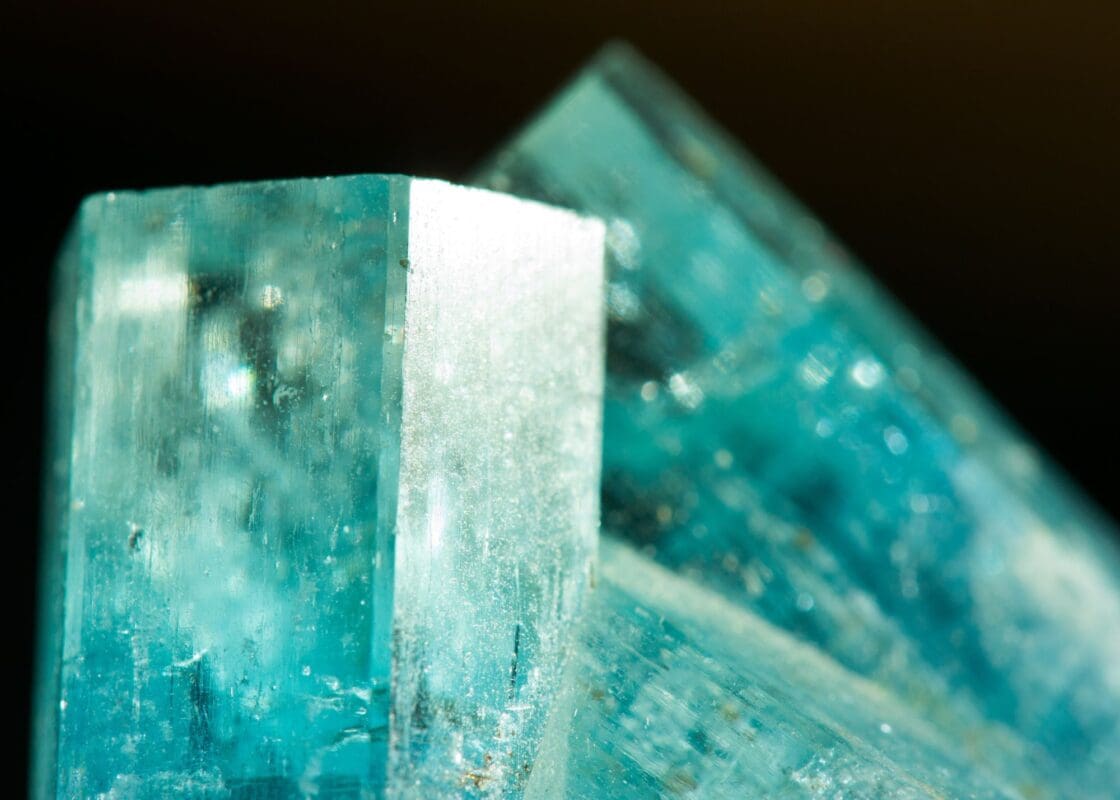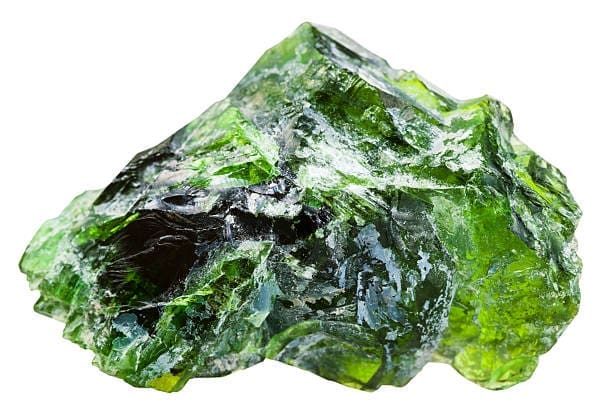Introduction
Beryl is a captivating mineral that not only plays a pivotal role in geology and gemology but also enchants jewelry enthusiasts with its array of stunning colors. At its core, beryl is composed of beryllium aluminum cyclosilicate, with the chemical formula Be₃Al₂(SiO₃)₆. This seemingly simple composition belies the complex and fascinating world of beryl varieties, each distinguished by its unique hue and characteristics.
The myriad colors of beryl are not a mere quirk of nature but the result of precise geological processes. The mineral’s basic structure can incorporate various impurities and trace elements, which dramatically alter its appearance. For instance, chromium and vanadium are the magicians behind the emerald’s lush green, while iron gives aquamarine its serene blue hues. This ability of beryl to host different elements is key to understanding the mineral’s diversity and appeal.
Beryl’s significance stretches beyond its beauty. In jewelry, it has been revered throughout history, with emeralds symbolizing wealth and power, and aquamarines considered as talismans for sailors. Furthermore, beryl has industrial applications, particularly in the fields of aerospace and electronics, owing to certain varieties’ specific physical properties, such as high hardness and resistance to corrosion.
The Basics of Beryl
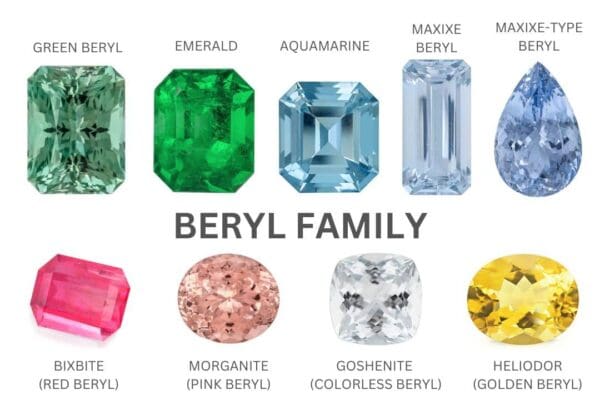
Physical and Chemical Properties Beryl stands out in the mineral world due to its remarkable hardness and durability. With a rating of 7.5 to 8 on the Mohs scale, beryl is resistant to scratches and everyday wear, making it an ideal choice for jewelry. Its crystal system is hexagonal, forming long, columnar crystals that can be quite large and impressive. The chemical formula, Be₃Al₂(SiO₃)₆, hints at its composition, which includes beryllium and aluminum silicate.
Role in Geology Geologically, beryl forms in pegmatites and certain metamorphic rocks, environments where its constituent elements are present in the right conditions for crystallization. These formations often occur in regions with a history of volcanic activity, making places like Colombia, Brazil, and the Urals in Russia, notable sources of high-quality beryl. The formation process and the environments in which beryl is found contribute significantly to its variety, availability, and the economic importance of mining regions.
Historical and Cultural Significance The cultural impact of beryl varieties spans centuries and civilizations. Emeralds, perhaps the most celebrated variety, were adored by ancient Egyptians as symbols of eternal youth and were a favorite gemstone of Cleopatra. In the Middle Ages, beryl was believed to possess healing properties and to protect against dangers while traveling. Aquamarine, with its oceanic colors, has been cherished as a symbol of purity and happiness. Each variety of beryl carries with it a rich tapestry of beliefs, values, and historical significance, embedding these gemstones deeply in human culture and history.
Emerald – The Crown Jewel of Beryl
Detailed Description of Emerald Emeralds are the epitome of green gemstones, with their vibrant hues ranging from bluish-green to a deep, vivid green. This enchanting coloration is primarily due to the presence of chromium and, in some cases, vanadium within the crystal structure of the beryl. The intensity and saturation of the green color are key factors in determining an emerald’s value. Unlike other gemstones, the presence of inclusions, often referred to as “jardin” (French for garden), is accepted and sometimes even valued in emeralds, as it attests to the gemstone’s natural origin and adds to its unique character.
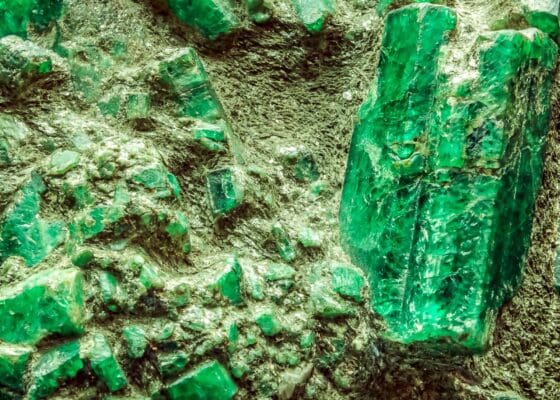
Famous Emerald Deposits The quest for emeralds has led to the discovery of several significant deposits across the globe. Colombia is renowned for producing some of the finest emeralds in the world, with mines in Muzo and Chivor being particularly famous. These Colombian emeralds are prized for their exceptional quality and vivid green color. Another notable source is Zambia, known for emeralds with a slightly bluish-green color. Brazil also contributes to the global emerald supply, offering a wide range of qualities and colors. Each of these locations has its unique geological conditions that influence the characteristics of the emeralds found there.
Tips for Identifying Genuine Emeralds and Understanding Their Value Identifying genuine emeralds and assessing their value can be challenging without the right knowledge. Here are some tips:
- Look for natural inclusions: Genuine emeralds typically have inclusions visible to the naked eye or under magnification.
- Check the color: The most valuable emeralds display a vivid, saturated green without being too dark.
- Consider the cut: Emeralds are often cut in the “emerald cut” (a rectangular step cut) to enhance their color and minimize stress on the crystal.
- Seek certification: A reputable gemological certificate can verify an emerald’s authenticity and characteristics.
Aquamarine – The Serene Sea Gem
Exploration of Aquamarine’s Hues Aquamarine, with its range from light blue to blue-green, embodies the tranquility of the sea. The gemstone’s color is primarily due to iron impurities within the beryl’s crystal structure. The intensity of the blue color increases with the iron content, and sometimes heat treatment is used to enhance this hue. The most sought-after aquamarines are those with a deep, clear blue color, reminiscent of tropical ocean waters.

Significant Aquamarine Mines Significant sources of aquamarine include Brazil, Madagascar, Nigeria, and Pakistan. Brazil, in particular, is famed for its large, high-quality aquamarines, with the Minas Gerais region being a prolific source. Mines in Madagascar and Pakistan are known for producing aquamarines with exceptional clarity and color. The geography of these regions contributes to the variety and quality of aquamarine available on the market.
Distinguishing Aquamarine from Similar Gemstones Aquamarine can be confused with other blue gemstones, such as topaz and blue sapphire. However, aquamarine typically has a softer blue hue and greater clarity. Its hardness on the Mohs scale is 7.5 to 8, making it durable but slightly softer than sapphire. When examining an aquamarine, look for its distinctive light blue to blue-green color, high clarity, and characteristic hexagonal crystal form.
Care and Handling of Aquamarine Jewelry Aquamarine is durable but requires proper care to maintain its beauty. Avoid exposing aquamarine jewelry to extreme temperatures and harsh chemicals. Cleaning with warm soapy water and a soft brush is recommended. Store aquamarine jewelry separately to prevent scratches from harder gemstones.
Morganite – The Pink Treasure
Introduction to Morganite Morganite is a gem that exudes warmth and elegance, with its spectrum of colors from soft pink to vibrant orange-pink. This beautiful variation of beryl owes its delightful hues to the presence of manganese within the crystal structure. The depth of its color can range from a subtle, almost peachy pink to a more pronounced magenta, depending on the concentration of manganese and how the stone is cut. Morganite’s allure is not just in its color but also in its clarity and luster, making it a favorite among gem enthusiasts and jewelry designers alike.

Naming of Morganite The gemstone was named morganite in honor of J.P. Morgan, the renowned American financier and gem collector, recognizing his significant contributions to the arts and sciences, including his notable donations to the American Museum of Natural History in New York. The naming was suggested by George F. Kunz, a prominent gemologist and Tiffany & Co.’s chief jeweler at the time, as a tribute to Morgan’s patronage in the early 20th century. Since then, morganite has held a place of esteem in gem collections around the world, celebrated for both its aesthetic appeal and its historical significance.
Guidance on Selecting Quality Morganite Stones for Jewelry Selecting a quality morganite involves a few key considerations:
- Color: Look for stones with a clear, vibrant pink or orange-pink hue. The more saturated the color, the more valuable the stone.
- Clarity: Morganite is typically eye-clean, meaning it should have few visible inclusions. High clarity enhances the gemstone’s natural brilliance.
- Cut: A well-executed cut not only enhances the stone’s color and clarity but also its overall beauty and sparkle. The cut should maximize the gemstone’s light return and showcase its unique hue.
- Size: Morganite crystals can grow quite large, making it possible to find sizable gemstones. Larger stones often exhibit the color and clarity of morganite more prominently.
Heliodor – The Gift of the Sun
Description of Heliodor Heliodor, deriving its name from the Greek words for “sun” (helios) and “gift” (doron), is a gemstone that truly lives up to its name. It ranges in color from a soft, pastel yellow to a vibrant yellow-green, reminiscent of the sun’s warming rays. The presence of iron in the beryl’s crystal structure is responsible for heliodor’s sunny hues. Unlike other colored gemstones, heliodor’s color can vary significantly in intensity, from almost colorless to deep golden yellow, offering a wide range of options for gemstone lovers.
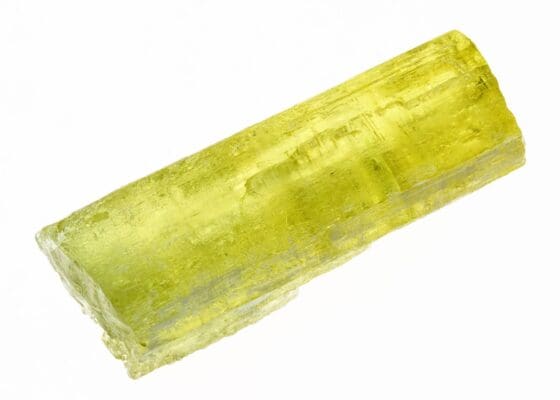
Locations and Appeal among Collectors Heliodor is found in several locations around the world, including Brazil, Namibia, Madagascar, and Ukraine. Brazil, in particular, is known for producing large, high-quality crystals that display a bright, sunny yellow. Namibia’s deposits are celebrated for their unique, greenish-yellow heliodor. The rarity of certain shades, especially the deeper yellow-green hues, adds to heliodor’s appeal among collectors and gem enthusiasts.
Advice on Incorporating Heliodor into Jewelry Pieces Heliodor’s sunny disposition makes it an excellent choice for jewelry that stands out. Here are some tips for incorporating heliodor into jewelry:
- Metal Choice: Yellow gold complements heliodor’s warm tones, while white metals like silver and white gold provide a striking contrast.
- Setting: Consider settings that allow plenty of light to enter the stone, enhancing its color and brilliance. Bezel settings offer protection for the gemstone, while prong settings showcase its beauty more fully.
- Design: Heliodor works well in both modern and vintage-inspired designs. Its versatility makes it suitable for rings, pendants, earrings, and bracelets.
- Durability: With a hardness of 7.5 to 8 on the Mohs scale, heliodor is durable enough for everyday wear but should be protected from hard knocks to avoid chipping.
Goshenite – The Pure Crystal
Discovery and Description of Goshenite Goshenite is the pure, colorless variety of beryl, named after its discovery location in Goshen, Massachusetts. Unlike its colorful counterparts in the beryl family, goshenite is distinguished by its lack of color, offering a crystal-clear appearance that showcases the mineral’s pure beauty. This clarity is due to the absence of the trace elements that color other beryls, making goshenite a showcase for the perfect structure and luster inherent in beryl.
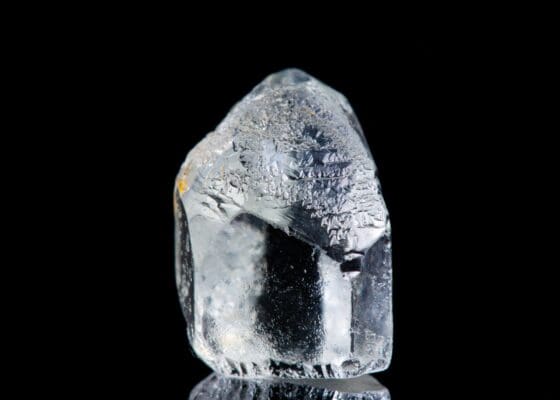
Uniqueness in the Beryl Family Goshenite’s lack of color sets it apart in the colorful world of beryl. This absence of hue allows it to act as a versatile gemstone, able to complement any setting without the color considerations required for other gemstones. Goshenite’s purity also makes it an excellent choice for those seeking a gemstone that symbolizes clarity and truth. Its transparency and brilliance are appreciated by gemologists and jewelry designers alike, providing a unique option for crafting pieces that highlight the natural beauty of gemstones without the influence of color.
Tips for Using Goshenite in Jewelry and Its Role in Industry
- In Jewelry: Goshenite’s neutral color and brilliance make it suitable for a wide range of jewelry settings. It can be cut into various shapes and sizes, offering designers flexibility in creating both classic and contemporary pieces. Goshenite pairs well with both precious and base metals, allowing for diverse design possibilities.
- As Accent Stones: Due to its clarity and neutrality, goshenite works well as an accent stone, complementing more colorful gemstones without competing with them.
- In Industry: Beyond its aesthetic appeal, goshenite has practical applications in industry. Its beryllium content makes it valuable in the production of high-precision instruments and certain electronic components, where the properties of beryl are beneficial.
Red Beryl – The Scarlet Rarity
Introduction to Red Beryl Red beryl, also known as bixbite, is a rare and captivating variety of beryl, known for its striking red color. This intense red hue is primarily due to the presence of manganese in its crystal structure. Red beryl’s rarity and distinctive coloration make it one of the most sought-after gemstones in the world, often fetching high prices in the gem market.
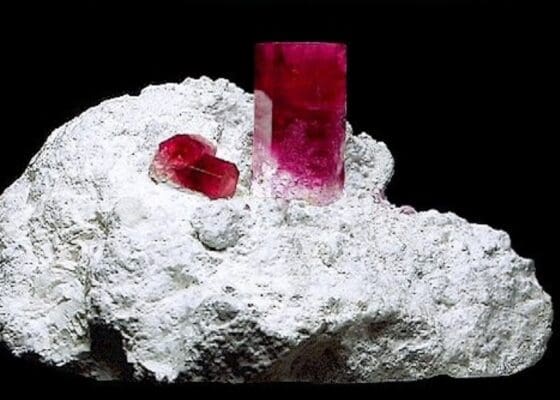
Limited Locations and Rarity Red beryl is found in only a few locations worldwide, with the most notable deposits in the Wah Wah Mountains of Utah, USA. Its rarity is due to the specific geological conditions required for its formation, which are not commonly found. The rarity of red beryl is such that it is considered one of the rarest gemstones on earth, with fine specimens being highly prized by collectors and gem enthusiasts.
Considerations for Collectors
- Authenticity: Due to its rarity, collectors should seek reputable sources and possibly certification when acquiring red beryl to ensure authenticity.
- Value: The value of red beryl is determined by its color, clarity, size, and cut. The more intense the red and the clearer the stone, the more valuable it is likely to be.
- Care: Like other beryls, red beryl requires care to maintain its beauty. It should be stored separately from harder gemstones to prevent scratches and cleaned gently with mild soap and water.
Maxixe – The Chameleon of Beryl
Introduction to Maxixe Maxixe (pronounced mah-shee-she) is a captivating, deep blue variety of beryl that has intrigued gem enthusiasts with its intense color and unique properties. One of the most notable characteristics of Maxixe is its tendency to fade when exposed to sunlight, a phenomenon that has earned it the nickname “the chameleon of beryl.” This color change is due to natural radiation and the presence of certain impurities within the crystal structure, which are responsible for its initial vivid coloration.

Discovery and Distinction Maxixe was first discovered in Madagascar, adding a rich, deep blue gemstone to the beryl family’s already diverse color palette. Unlike aquamarine, another blue beryl, which owes its color to iron, Maxixe’s color is more intense and has a different cause, though the precise nature of the impurities leading to its coloration is still a subject of study. The discovery of Maxixe expanded the range of colors available in beryl, although its rarity and color stability issues have limited its availability and use in the gem market.
Care Instructions for Preserving Maxixe’s Color
- Light Exposure: To preserve Maxixe’s deep blue color, minimize its exposure to direct sunlight. When not being worn, store it in a dark, cool place.
- Storage: Keep Maxixe away from other gemstones to prevent scratches. A soft, padded jewelry box is ideal.
- Cleaning: Clean Maxixe gently with a soft, damp cloth. Avoid harsh chemicals and ultrasonic cleaners, as these can damage the stone or exacerbate color fading.
Caring for Your Beryl Gemstones
General Care Tips The beryl family, including emeralds, aquamarines, morganites, heliodors, goshenites, red beryls, and Maxixe, requires proper care to maintain their beauty and integrity. Here are some general care tips applicable to all beryl varieties:
- Cleaning: Use a soft brush and mild soap in lukewarm water to gently clean your beryl gemstones. Avoid using harsh chemicals, which can damage the stone or erode its natural luster.
- Storage: Store beryl gemstones separately in a jewelry box with dividers or in individual soft pouches to prevent scratching from harder stones.
- Handling: Always handle beryl gemstones with care to avoid chipping or cracking. Be particularly careful with emeralds, which are more prone to inclusions and can be more fragile.
Impact of Light, Temperature, and Chemicals
- Light: Prolonged exposure to direct sunlight can affect the color of certain beryl varieties, such as Maxixe. Keep gemstones out of direct sunlight when not in use.
- Temperature: Sudden temperature changes can cause some beryl gemstones to crack. Avoid exposing your beryl jewelry to extreme temperatures.
- Chemicals: Exposure to harsh chemicals, including chlorine and cleaning agents, can damage beryl gemstones. Remove your beryl jewelry before swimming in chlorinated water or using household cleaners.
By following these care instructions and understanding the impact of environmental factors, you can ensure that your beryl gemstones remain vibrant and cherished for years to come. This chapter underscores the importance of mindful care and maintenance to preserve the natural beauty and longevity of these precious gemstones.
Conclusion
Throughout this guide, we have journeyed into the diverse and colorful world of beryl, a mineral family that encompasses some of the most coveted and admired gemstones in the world. From the deep green allure of emerald to the serene blue of aquamarine, the warm hues of morganite, the sunny brightness of heliodor, the pure clarity of goshenite, the rare scarlet of red beryl, and the unique chameleon-like qualities of Maxixe, beryl presents an extraordinary palette of colors that captivate both the eye and the imagination.
Beryl’s significance extends beyond its aesthetic appeal, embedding itself deeply within various cultural and historical contexts. Each variety of beryl carries with it a storied past, symbolizing wealth, power, protection, and love across civilizations and through the ages. In addition to its cultural importance, beryl plays a vital role in geology, offering insights into the environmental conditions that shape our planet’s crust and the processes that lead to the formation of precious gemstones.
As we conclude this guide, we encourage readers to explore and appreciate the beauty and variety of beryl gemstones further. Whether you are a seasoned collector, a jewelry enthusiast, or someone with a burgeoning interest in the fascinating world of gemology, beryl offers a window into the earth’s most captivating natural wonders.
Glossary
- Beryl: A mineral consisting of beryllium aluminum cyclosilicate, known for its variety of colorful gemstones.
- Crystal Structure: The unique arrangement of atoms in a crystal, determining the physical properties and appearance of the mineral.
- Inclusions: Materials or voids within a gemstone, which can affect its clarity, color, and overall appearance.
- Mohs Scale: A scale of hardness used in mineralogy, ranging from 1 (talc) to 10 (diamond).
- Pegmatites: Coarse-grained igneous rocks that form during the final stage of magma crystallization, often a source of gem-quality minerals.
- Gemology: The science and study of gemstones, including their identification, grading, and valuation.
- Hexagonal Crystal System: A crystal system characterized by three equal axes intersecting at 60-degree angles and a fourth axis that is perpendicular and of a different length, common to beryl crystals.
- Igneous Rocks: Rocks formed through the cooling and solidification of magma or lava, a primary source of many gemstones, including beryl.
- Metamorphic Rocks: Rocks that have undergone transformation by heat, pressure, or other natural processes, also a source for certain types of beryl.
- Radiation: The process that can alter the color of certain gemstones, including Maxixe, through exposure to natural or artificial sources.
- Trace Elements: Minor elements found in the crystal structure of minerals that can significantly affect their color and other properties.
- Cleavage: The tendency of a mineral to break along flat planes of weakness within its crystal structure. Beryl has poor cleavage, making it more resistant to breakage in certain directions.
- Refractive Index: A measure of how much light bends, or refracts, when entering a gemstone. It is a key factor in assessing a gemstone’s brilliance and fire.
- Luster: The way light interacts with the surface of a gemstone, ranging from vitreous (glass-like) to dull, which contributes to its overall appearance and appeal.
- Hardness: The measure of a mineral’s resistance to scratching, crucial for determining its suitability in jewelry and its care.
Further Reading and Resources
For those eager to delve deeper into the world of beryl and gemstones, the following resources are invaluable:
- Books:
- “Gemstones of the World” by Walter Schumann: A comprehensive guide to gemstones, including detailed information on beryl varieties.
- “Gems: Their Sources, Descriptions and Identification” by Michael O’Donoghue: A detailed reference that covers the science and history of gemstones, including beryl.
- Websites:
- Gemological Institute of America (GIA): Offers extensive educational resources on gemstones, including articles and research on beryl varieties.
- Minerals.net: Provides detailed mineralogical information on beryl and its varieties, along with photos and identification tips.
- Places to Visit:
- The Smithsonian National Museum of Natural History in Washington, D.C.: Home to the renowned Janet Annenberg Hooker Hall of Geology, Gems, and Minerals, featuring an impressive collection of beryl gemstones.
- The American Museum of Natural History in New York: Offers exhibits on gemstones and minerals, including spectacular specimens of beryl.
Places to Gem Mine for Beryl
United States:
- Crabtree Emerald Mine, North Carolina: A famous spot for finding emeralds, the state gem of North Carolina. Visitors can search for their own emerald specimens.
- Wah Wah Mountains, Utah: Known for the rare red beryl (bixbite), these mountains offer a glimpse into the geological conditions required for this gemstone’s formation.
- Gem Mountain, Montana: This location is famous for its sapphire deposits but also has beryl, including aquamarine.
Across the World:
- Minas Gerais, Brazil: This region is renowned for its variety of gemstones, including top-quality emeralds, aquamarine, and heliodor.
- Muzo and Chivor Mines, Colombia: World-famous for producing the finest emeralds, these mines are central to Colombia’s gemstone heritage.
- Ural Mountains, Russia: Known for historical emerald mines, offering insights into the geological diversity that produces beryl.
- Sakangyi, Myanmar: A location noted for its exceptional quality of beryl varieties, including morganite.
- Madagascar: Rich in gemstone deposits, Madagascar is a source of aquamarine and goshenite, among other gemstones.
- Kunar Province, Afghanistan: Known for high-quality emerald mines, illustrating the global distribution of beryl.
- Erongo Region, Namibia: Famous for aquamarine and other beryl varieties, showcasing the unique geology of Namibia.
- These locations not only offer opportunities to find and observe beryl in its natural environment but also provide a deeper understanding of the geological processes that create such diverse and beautiful gemstones.
By exploring these resources and visiting museums that showcase the natural beauty of gemstones, enthusiasts can deepen their understanding and appreciation of beryl and its many wonders.

